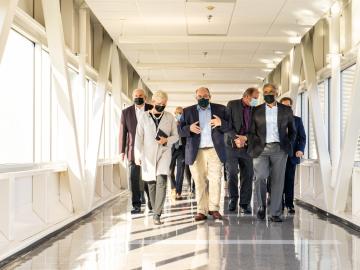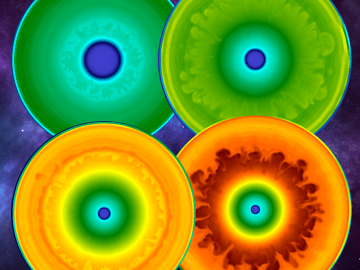
Filter News
Area of Research
- Advanced Manufacturing (2)
- Biological Systems (1)
- Biology and Environment (59)
- Building Technologies (1)
- Computational Engineering (1)
- Computer Science (2)
- Electricity and Smart Grid (1)
- Energy Science (68)
- Energy Sciences (1)
- Fuel Cycle Science and Technology (1)
- Fusion and Fission (21)
- Fusion Energy (5)
- Isotope Development and Production (1)
- Isotopes (17)
- Materials (79)
- Materials Characterization (2)
- Materials Under Extremes (1)
- National Security (29)
- Neutron Science (36)
- Nuclear Science and Technology (3)
- Supercomputing (80)
News Type
Date
News Topics
- 3-D Printing/Advanced Manufacturing (50)
- Advanced Reactors (8)
- Artificial Intelligence (71)
- Big Data (38)
- Bioenergy (38)
- Biology (51)
- Biomedical (20)
- Biotechnology (16)
- Buildings (43)
- Chemical Sciences (54)
- Clean Water (11)
- Composites (17)
- Computer Science (69)
- Coronavirus (4)
- Critical Materials (13)
- Cybersecurity (9)
- Education (5)
- Emergency (4)
- Energy Storage (36)
- Environment (81)
- Exascale Computing (40)
- Fossil Energy (6)
- Frontier (40)
- Fusion (21)
- Grid (32)
- High-Performance Computing (78)
- Hydropower (4)
- Irradiation (2)
- Isotopes (28)
- ITER (2)
- Machine Learning (38)
- Materials (83)
- Materials Science (42)
- Mathematics (9)
- Mercury (2)
- Microelectronics (4)
- Microscopy (11)
- Molten Salt (2)
- Nanotechnology (9)
- National Security (55)
- Neutron Science (55)
- Nuclear Energy (36)
- Partnerships (53)
- Physics (23)
- Polymers (9)
- Quantum Computing (32)
- Quantum Science (31)
- Security (11)
- Simulation (53)
- Software (1)
- Space Exploration (7)
- Statistics (3)
- Summit (23)
- Transportation (33)
Media Contacts

Researchers at the Department of Energy’s Oak Ridge National Laboratory are supporting the grid by improving its smallest building blocks: power modules that act as digital switches.

Tristen Mullins enjoys the hidden side of computers. As a signals processing engineer for ORNL, she tries to uncover information hidden in components used on the nation’s power grid — information that may be susceptible to cyberattacks.

Creating energy the way the sun and stars do — through nuclear fusion — is one of the grand challenges facing science and technology. What’s easy for the sun and its billions of relatives turns out to be particularly difficult on Earth.


Ken Herwig's scientific drive crystallized in his youth when he solved a tough algebra word problem in his head while tossing newspapers from his bicycle. He said the joy he felt in that moment as a teenager fueled his determination to conquer mathematical mysteries. And he did.

As a result of largescale 3D supernova simulations conducted on the Oak Ridge Leadership Computing Facility’s Summit supercomputer by researchers from the University of Tennessee and Oak Ridge National Laboratory, astrophysicists now have the most complete picture yet of what gravitational waves from exploding stars look like.

Scientist-inventors from ORNL will present seven new technologies during the Technology Innovation Showcase on Friday, July 14, from 8 a.m.–4 p.m. at the Joint Institute for Computational Sciences on ORNL’s campus.

Working with Western Michigan University and other partners, ORNL engineers are placing low-powered sensors in the reflective raised pavement markers that are already used to help drivers identify lanes. Microchips inside the markers transmit information to passing cars about the road shape to help autonomous driving features function even when vehicle cameras or remote laser sensing, called LiDAR, are unreliable because of fog, snow, glare or other obstructions.

An advance in a topological insulator material — whose interior behaves like an electrical insulator but whose surface behaves like a conductor — could revolutionize the fields of next-generation electronics and quantum computing, according to scientists at ORNL.

To support the development of a revolutionary new open fan engine architecture for the future of flight, GE Aerospace has run simulations using the world’s fastest supercomputer capable of crunching data in excess of exascale speed, or more than a quintillion calculations per second.


